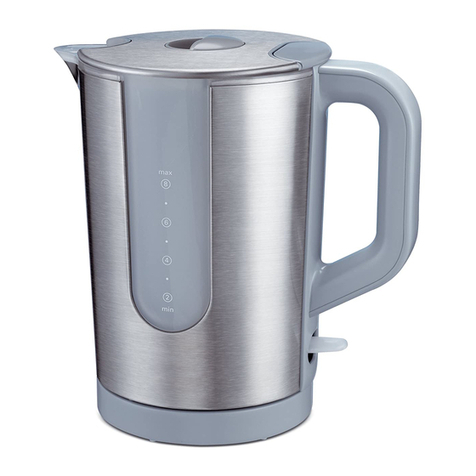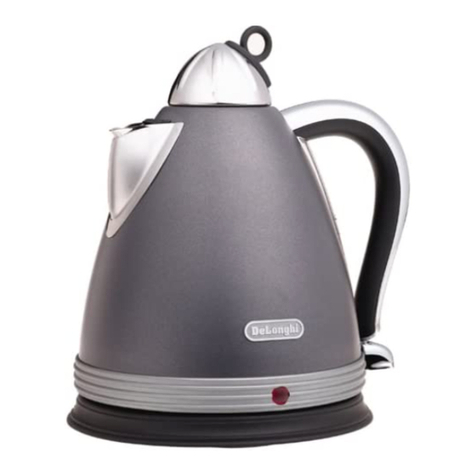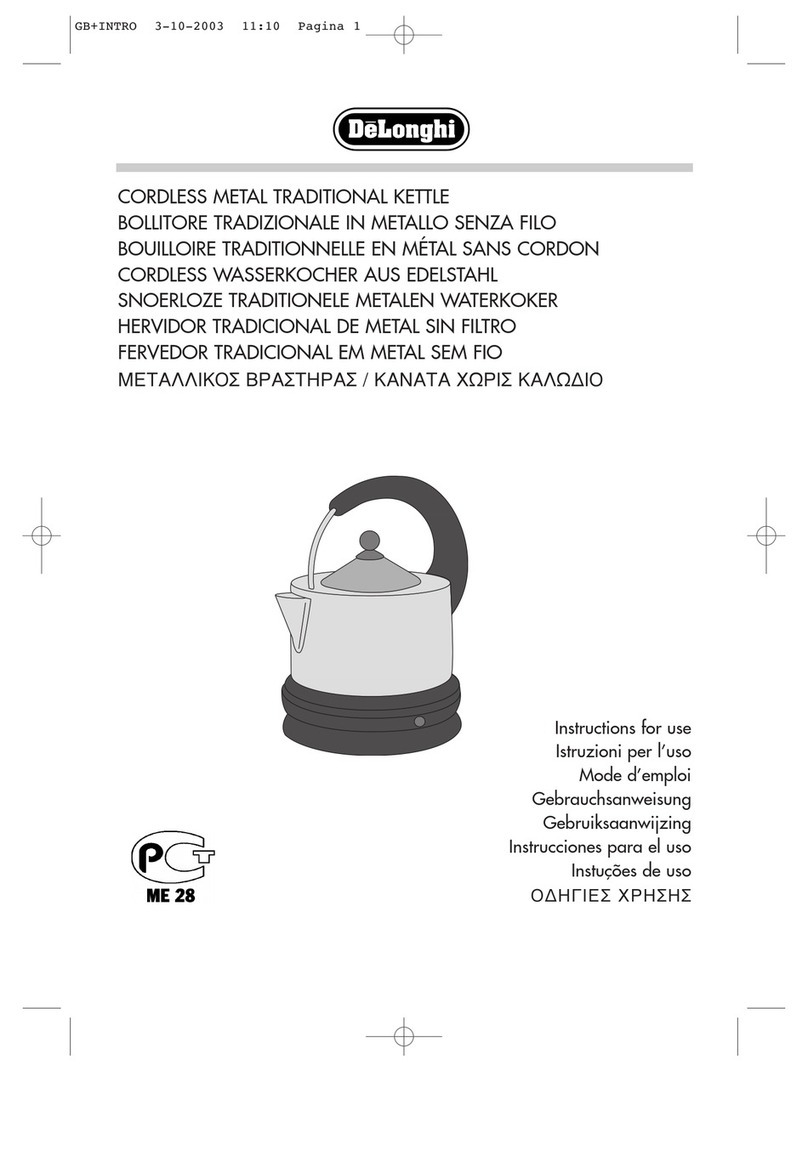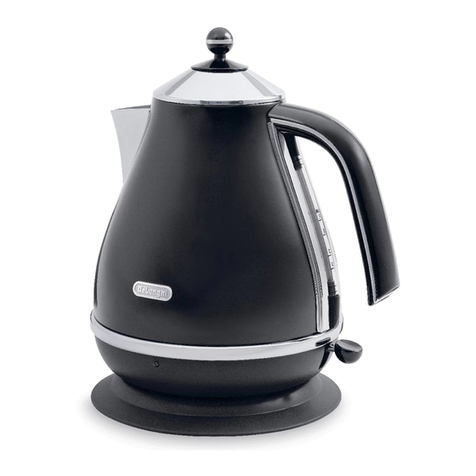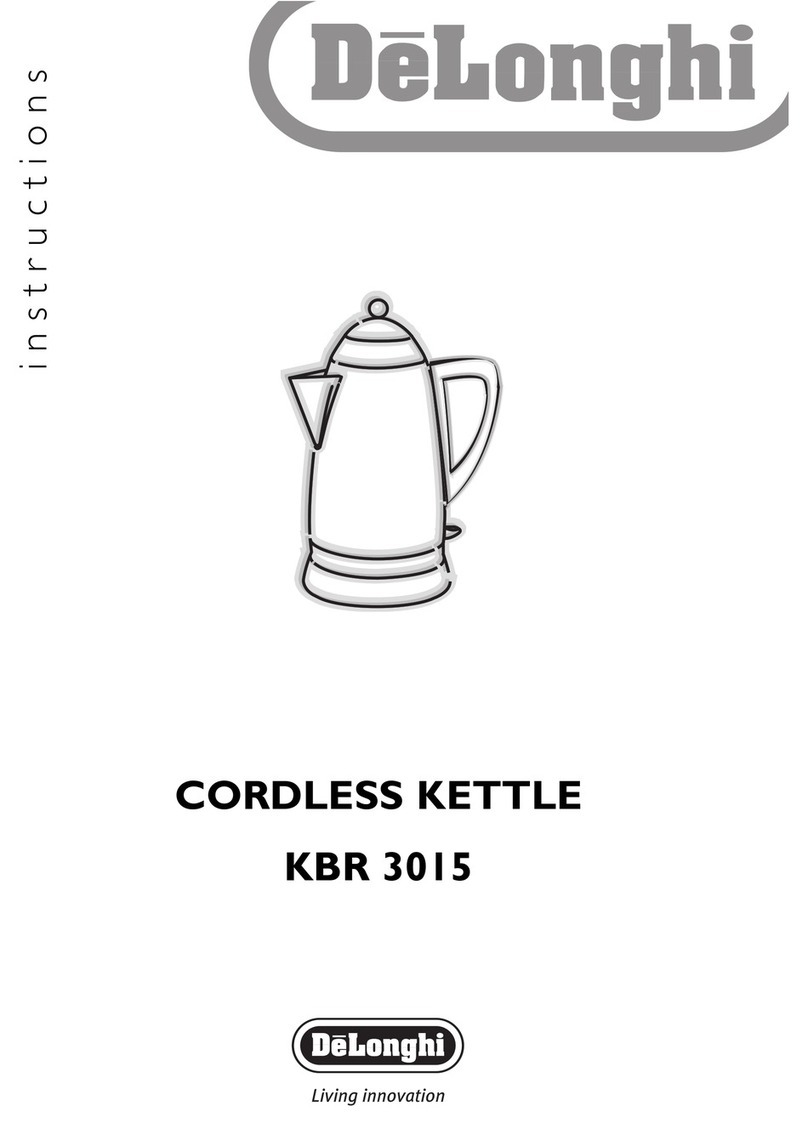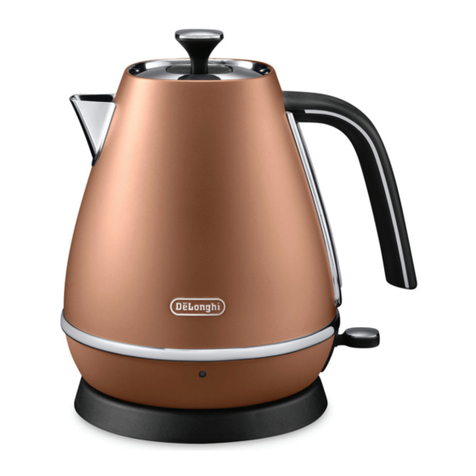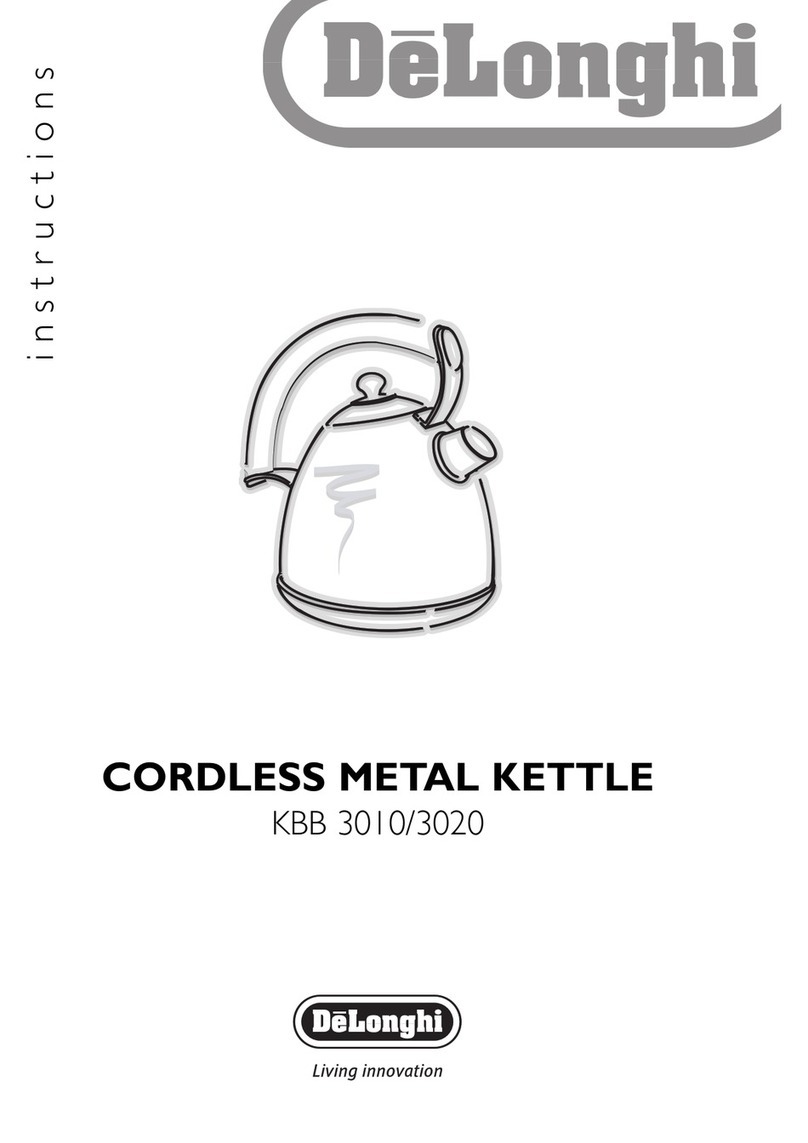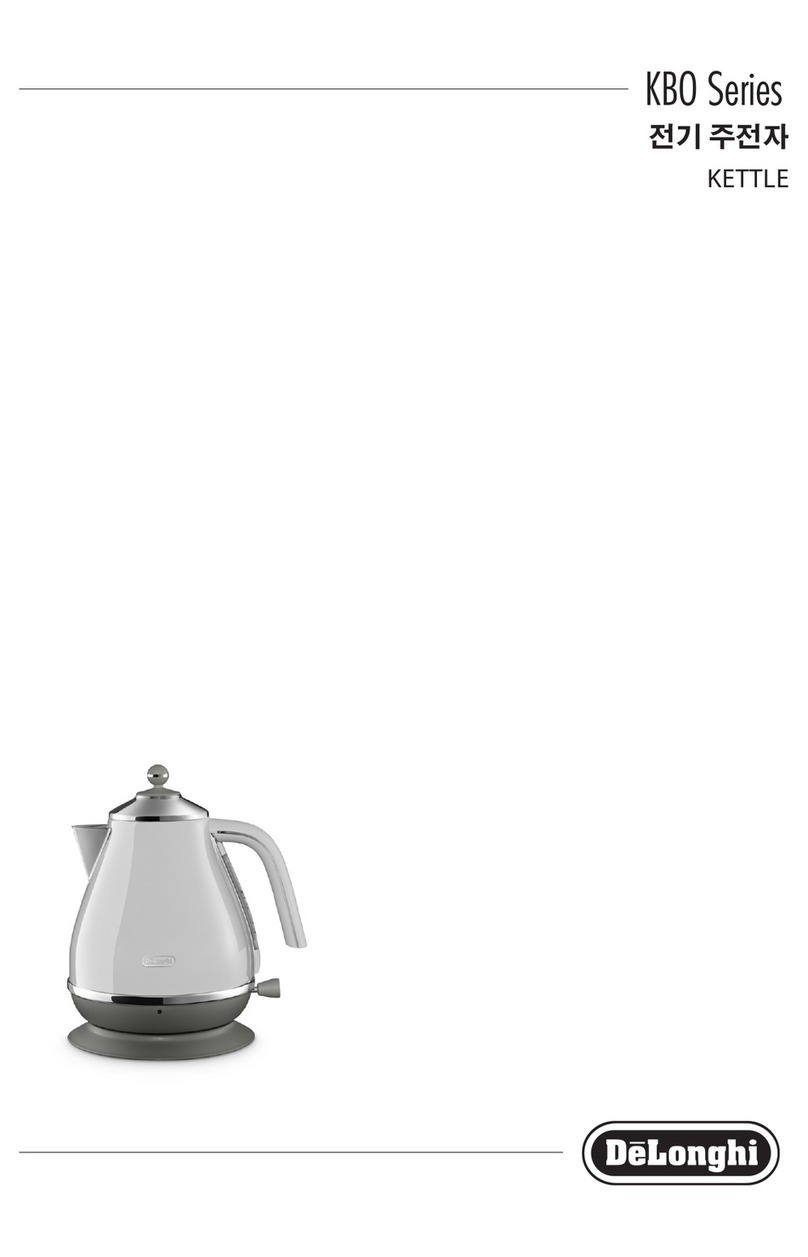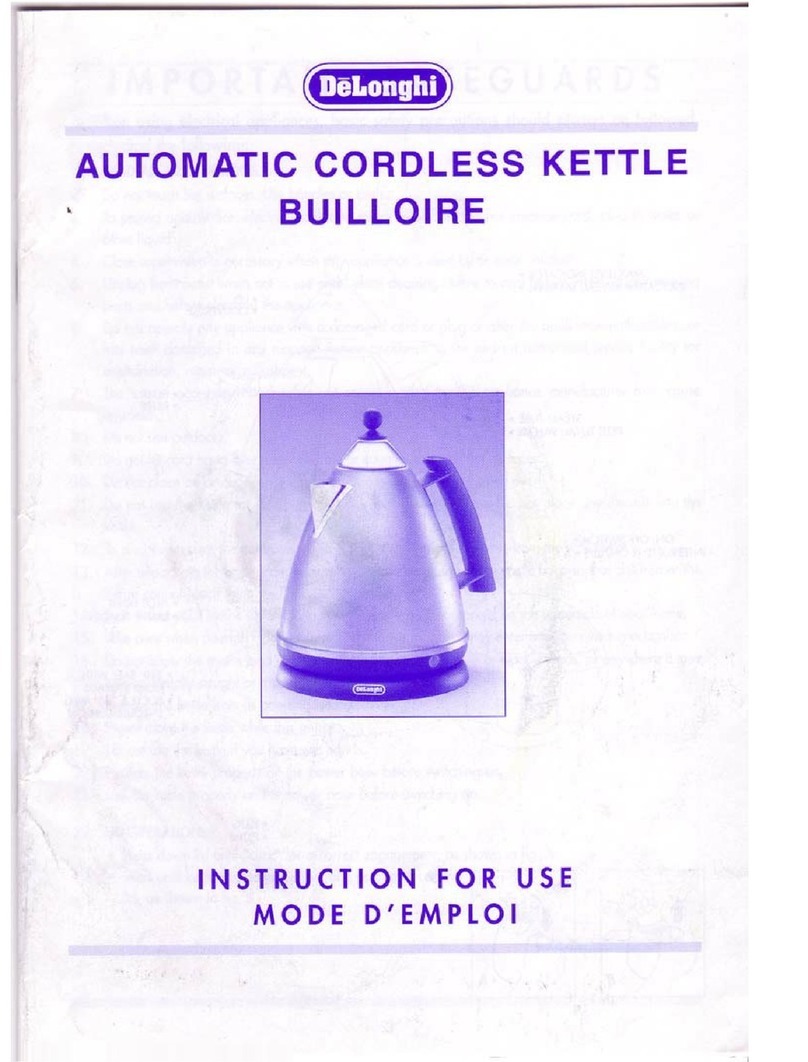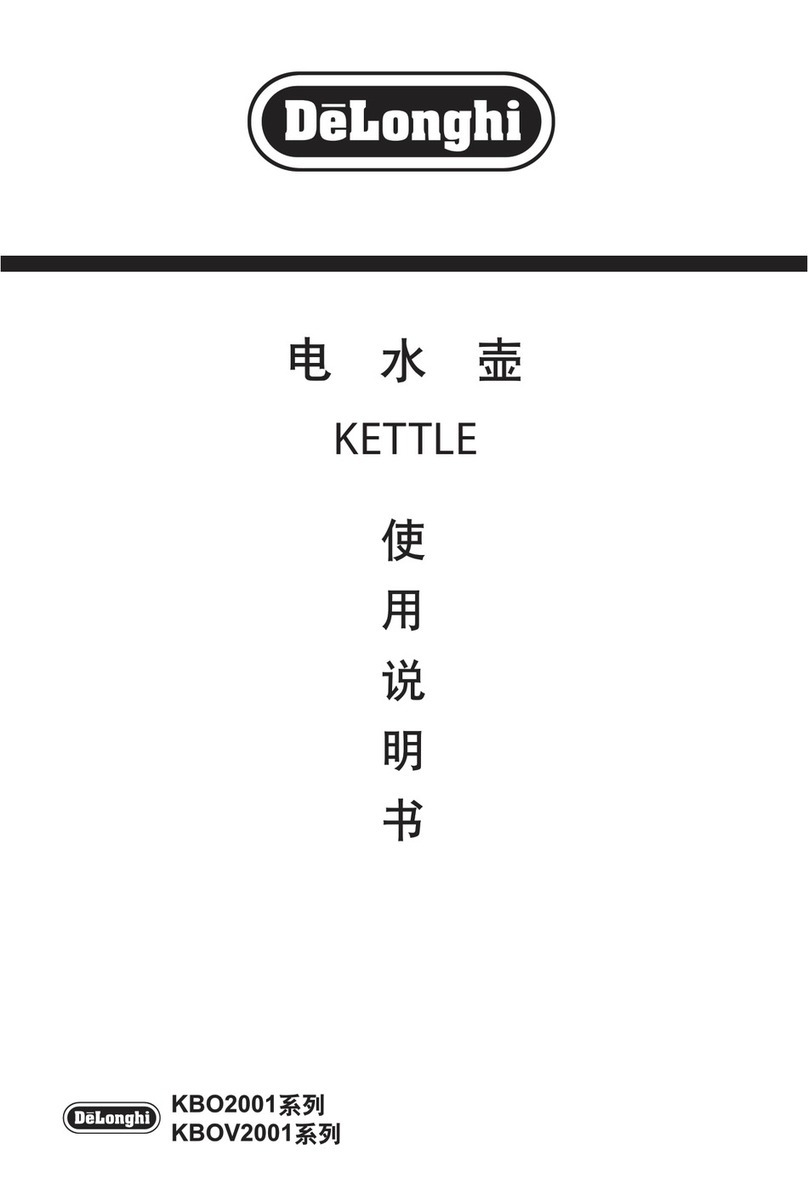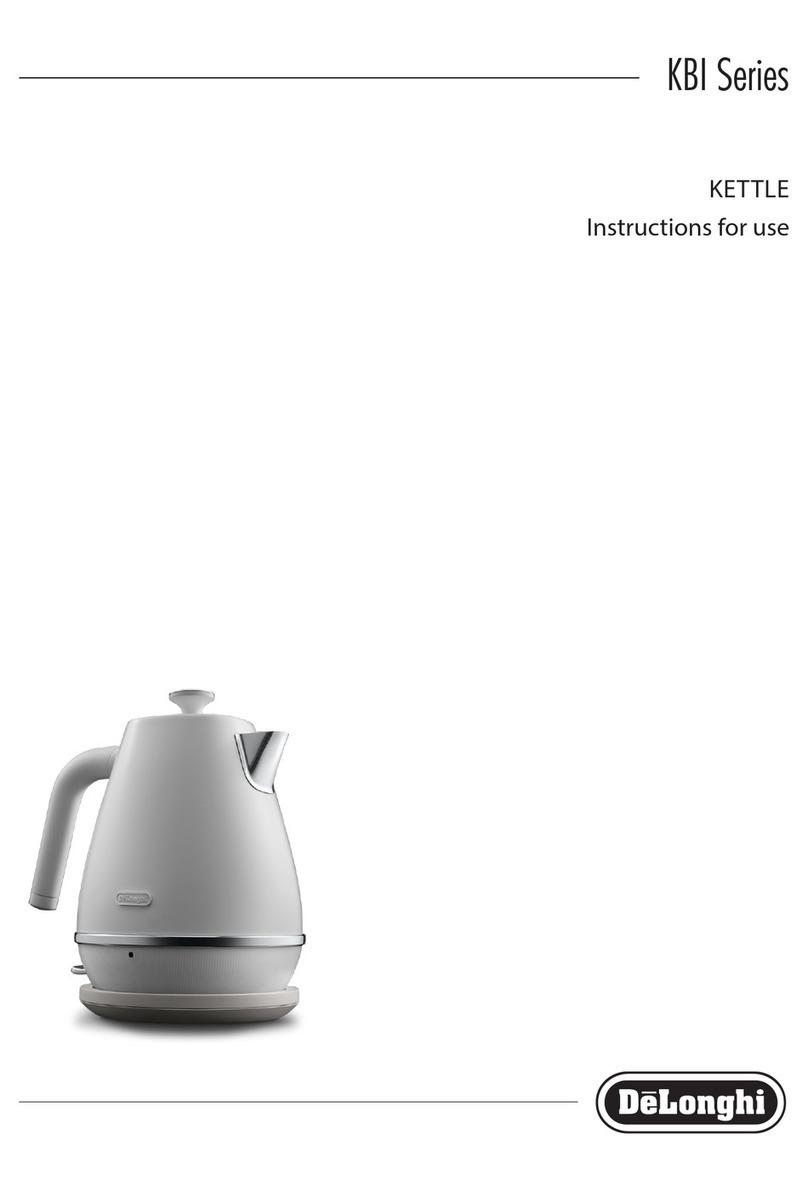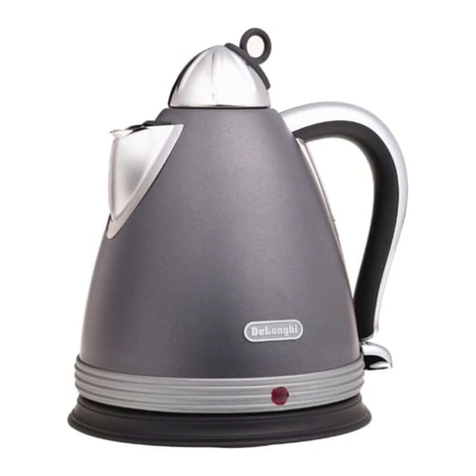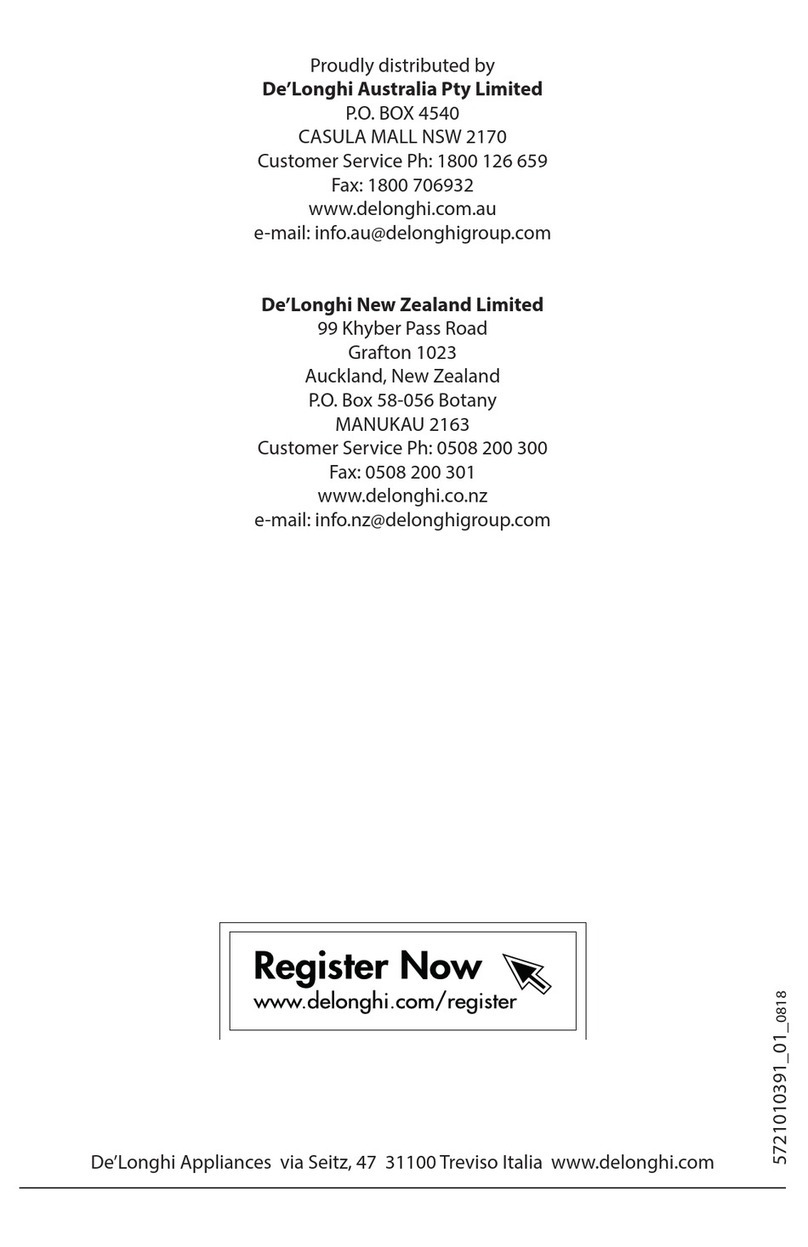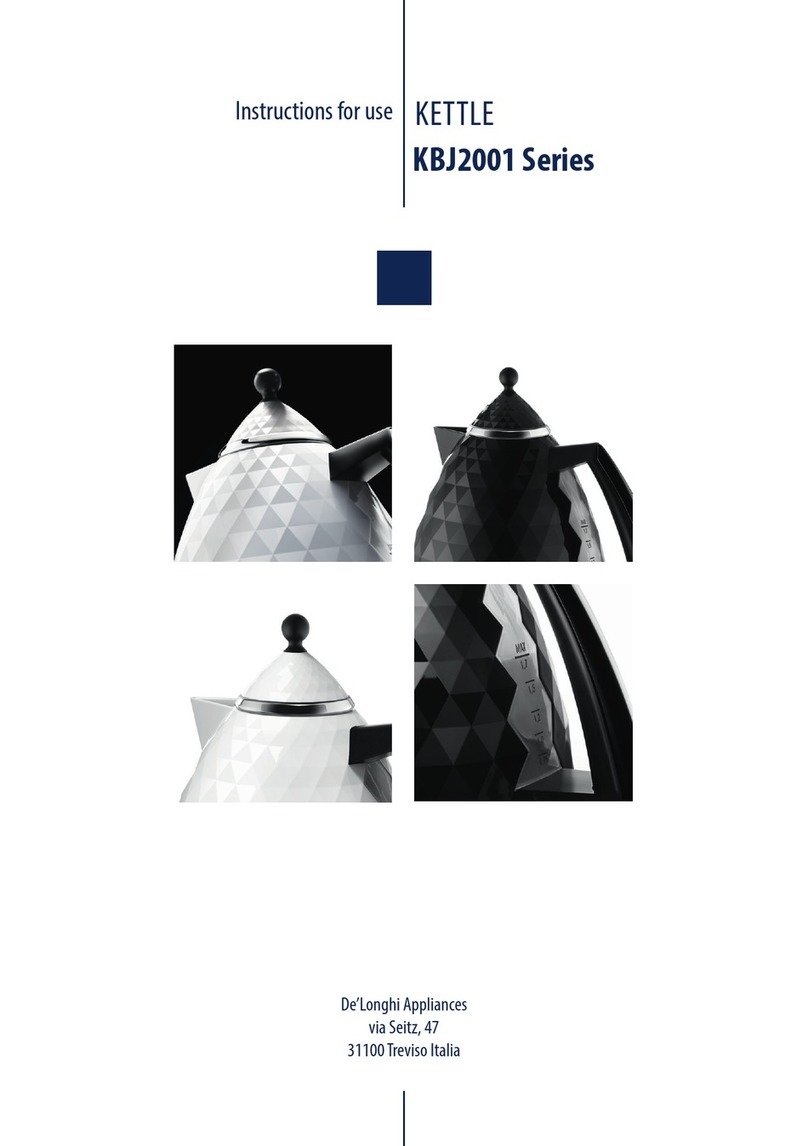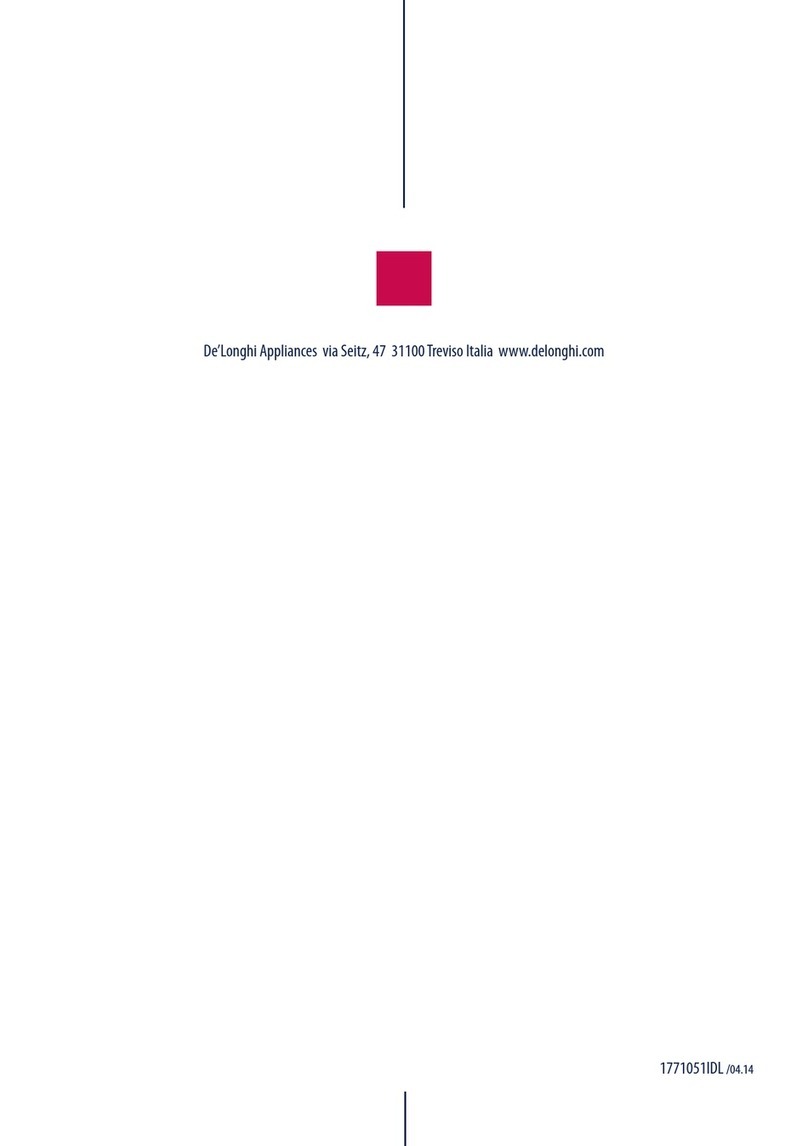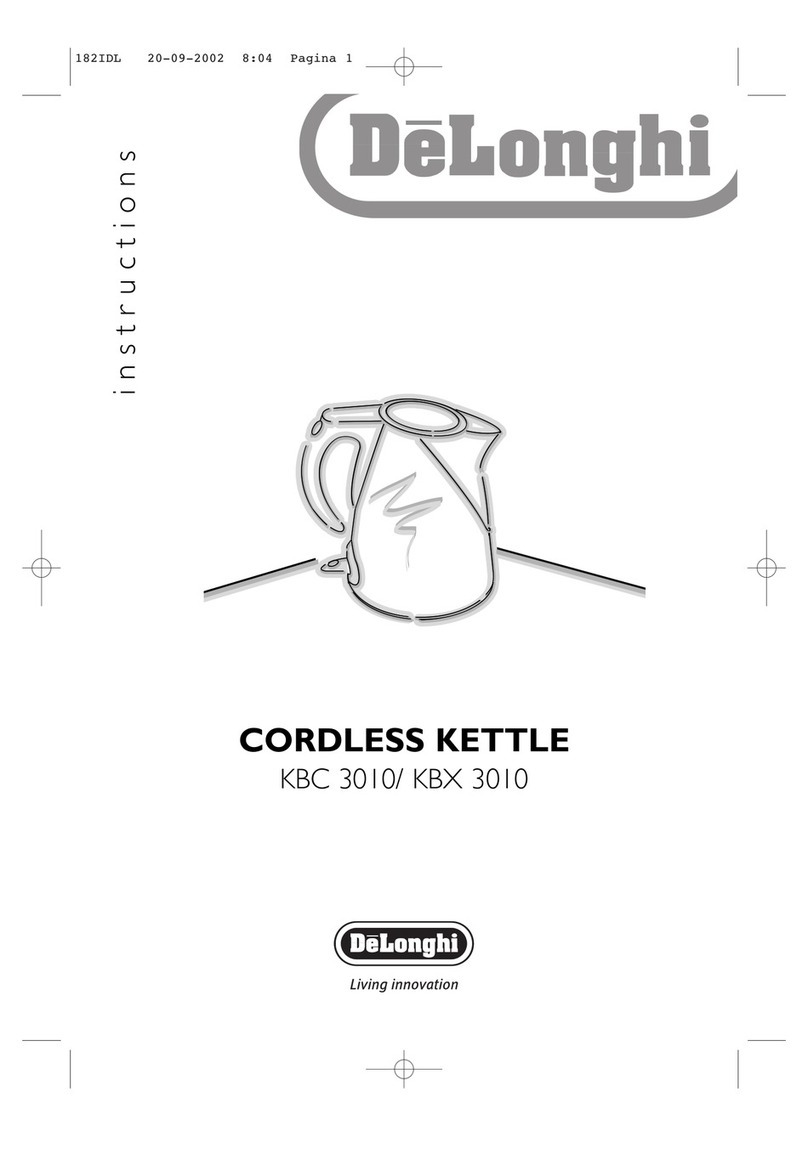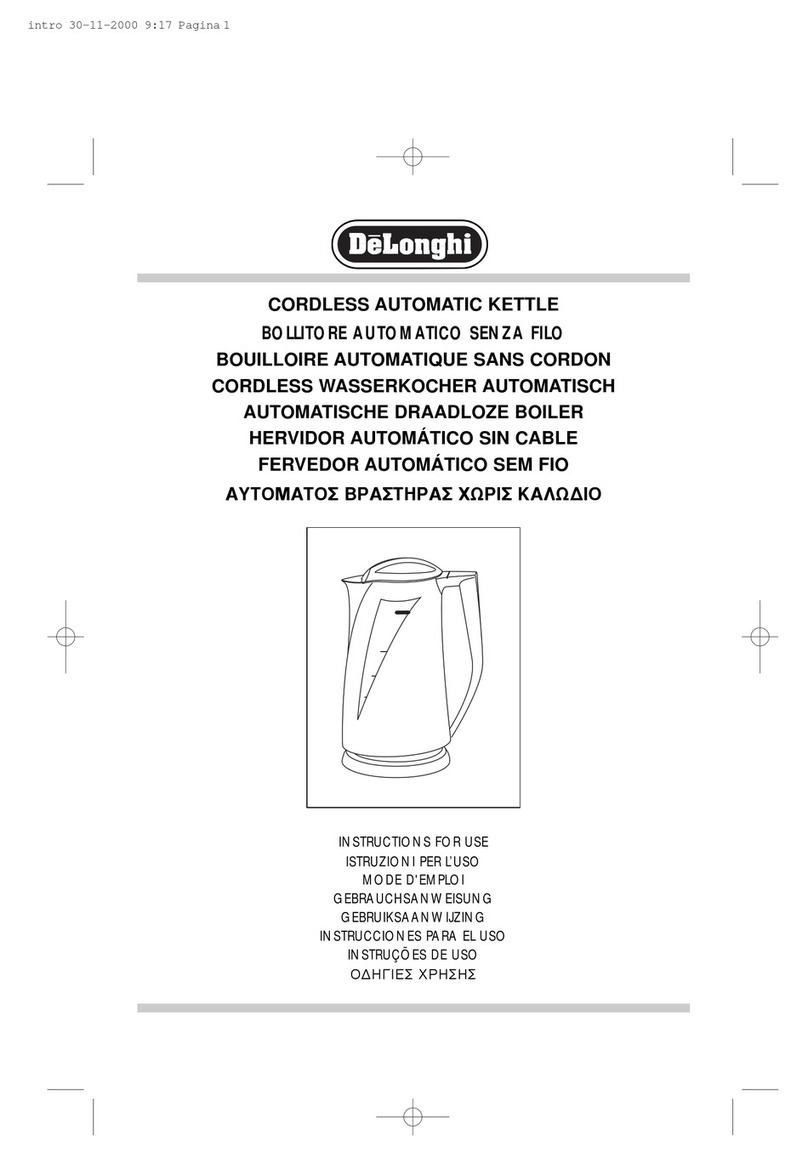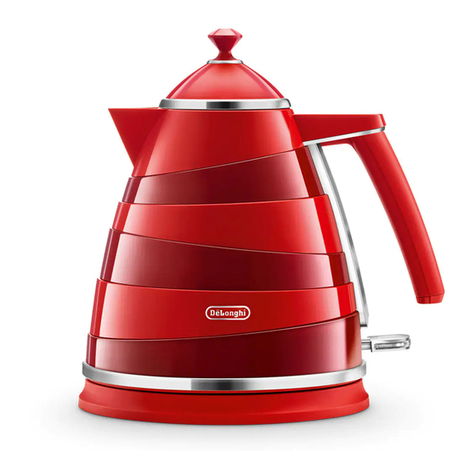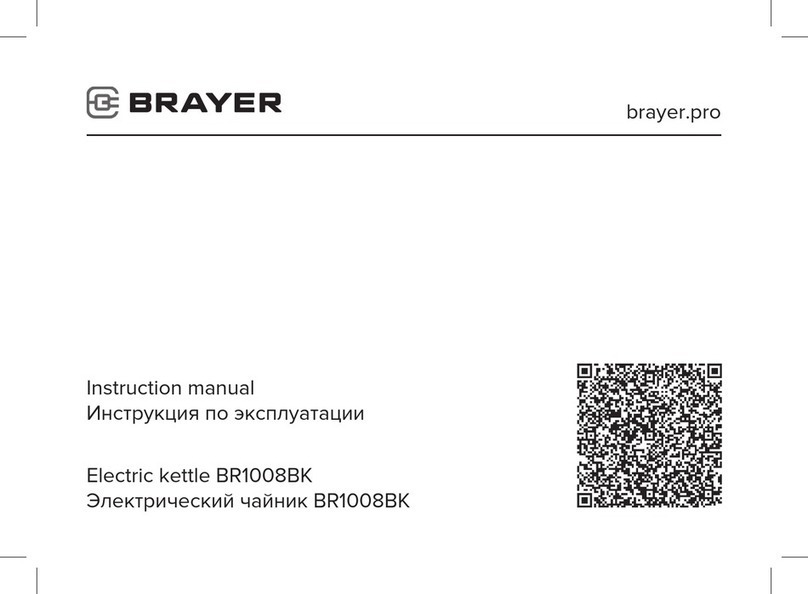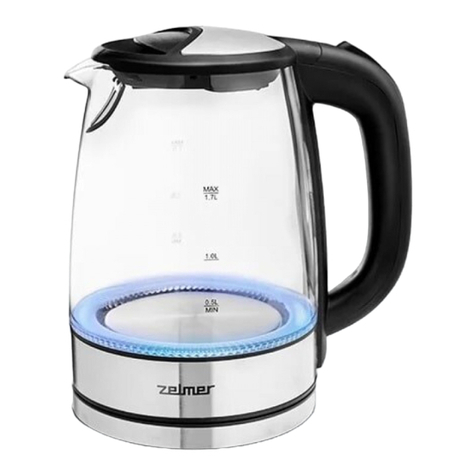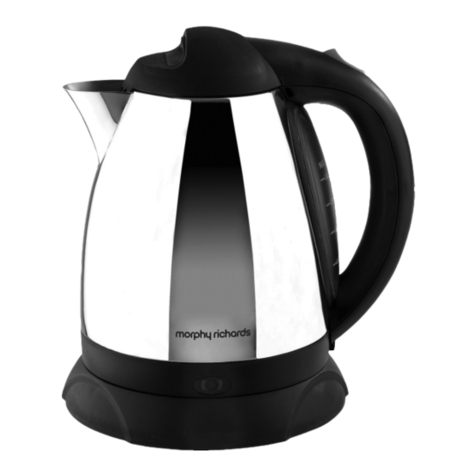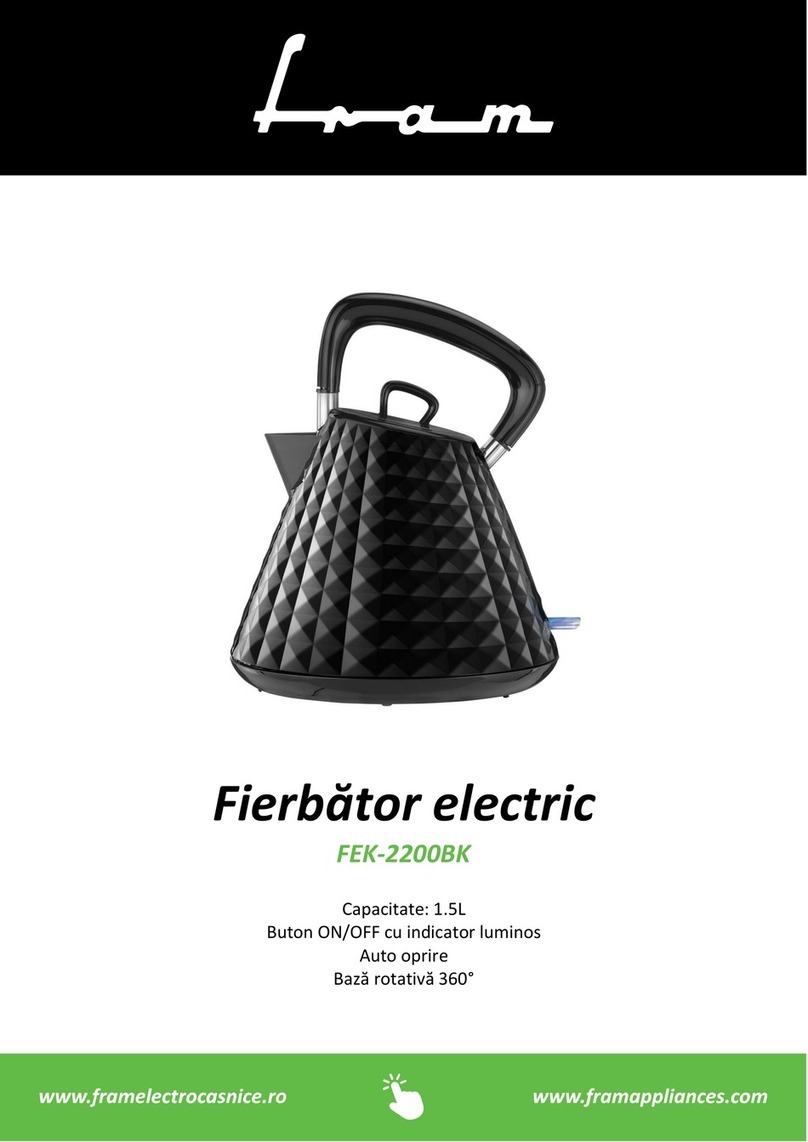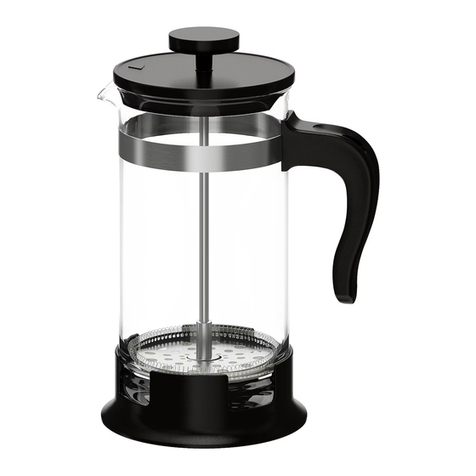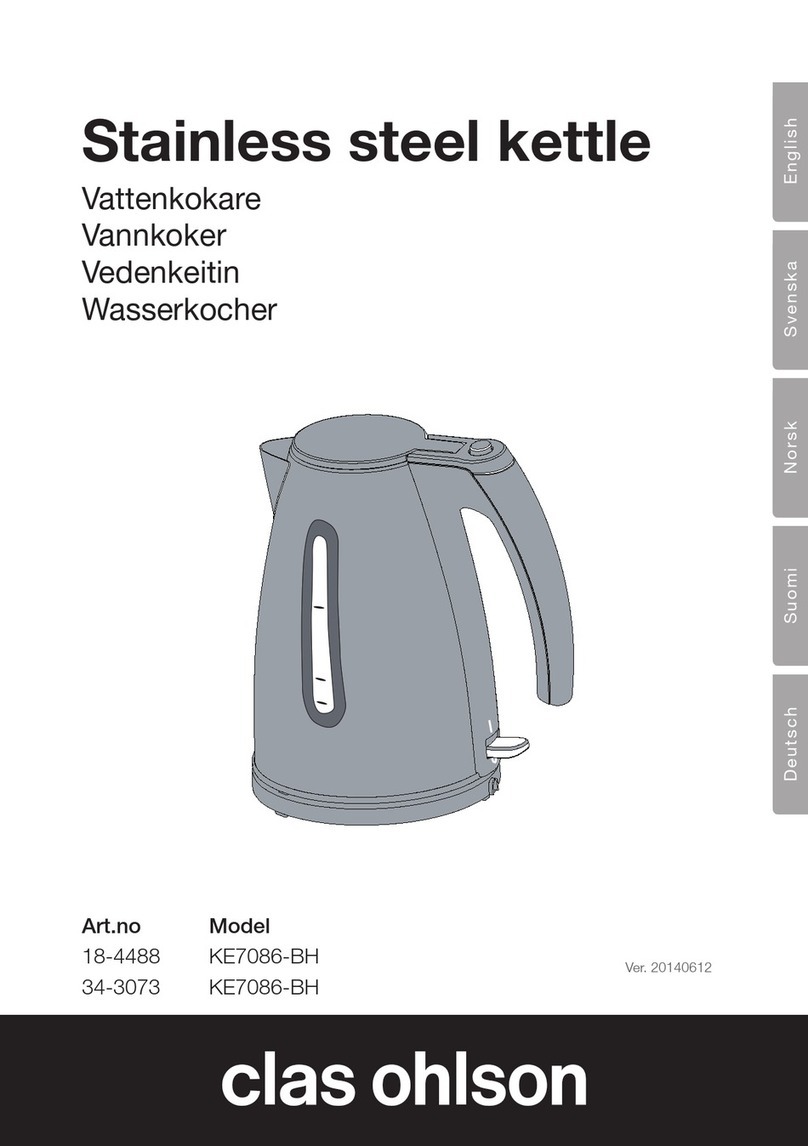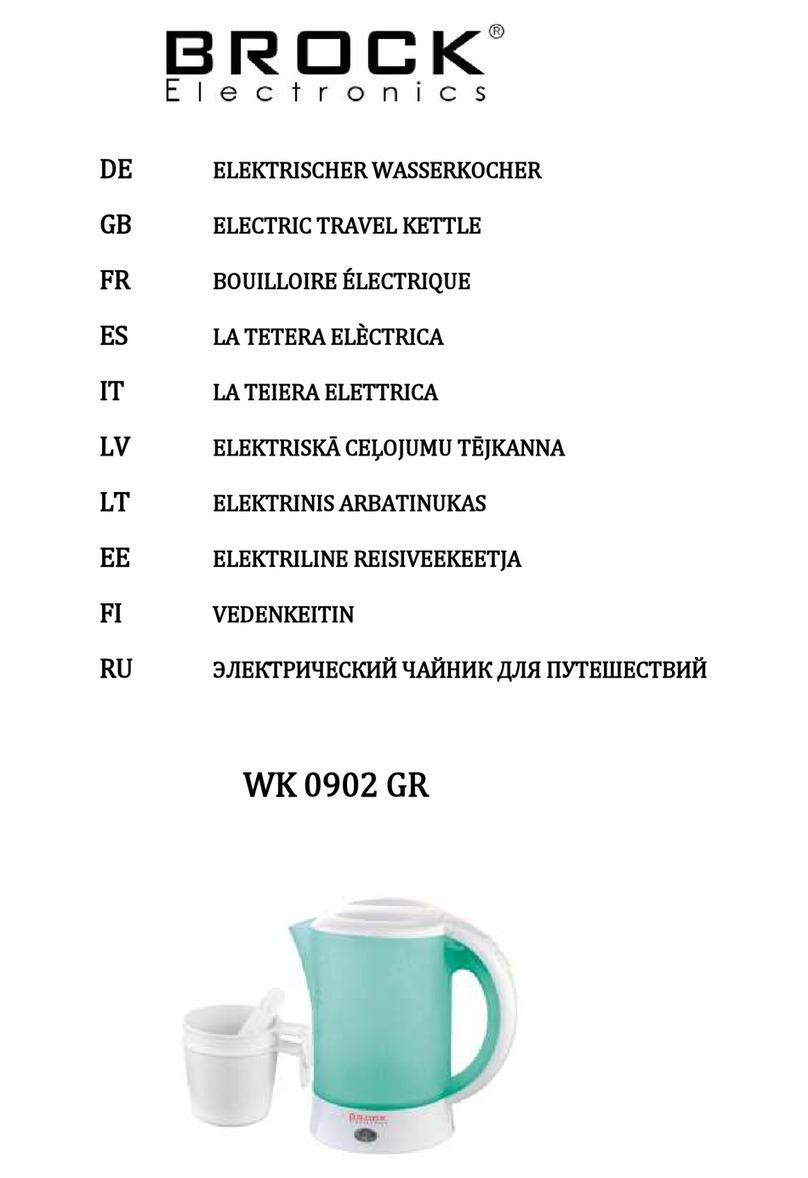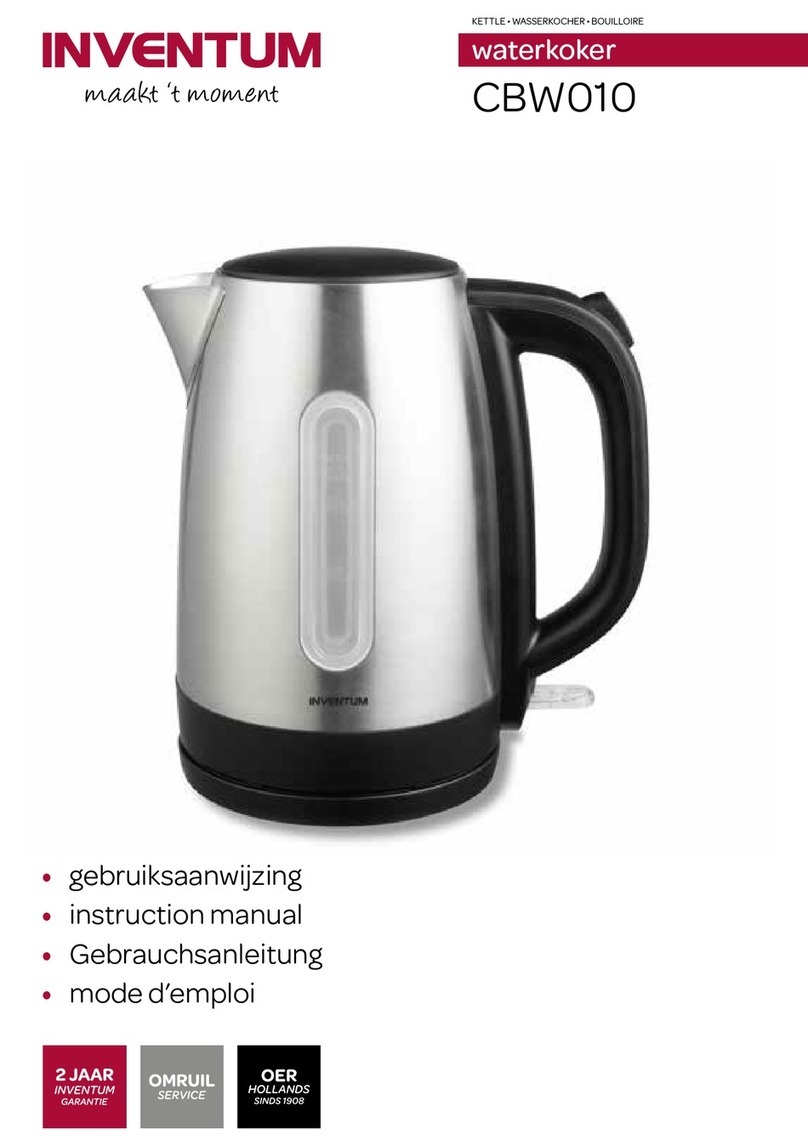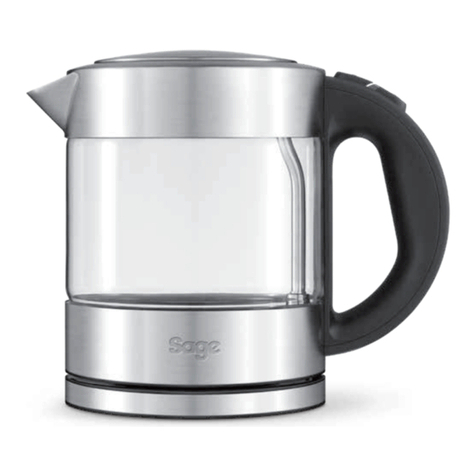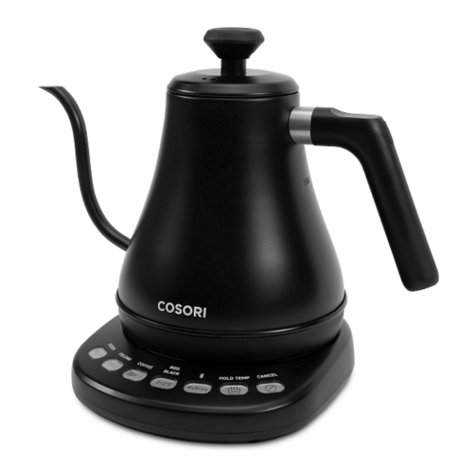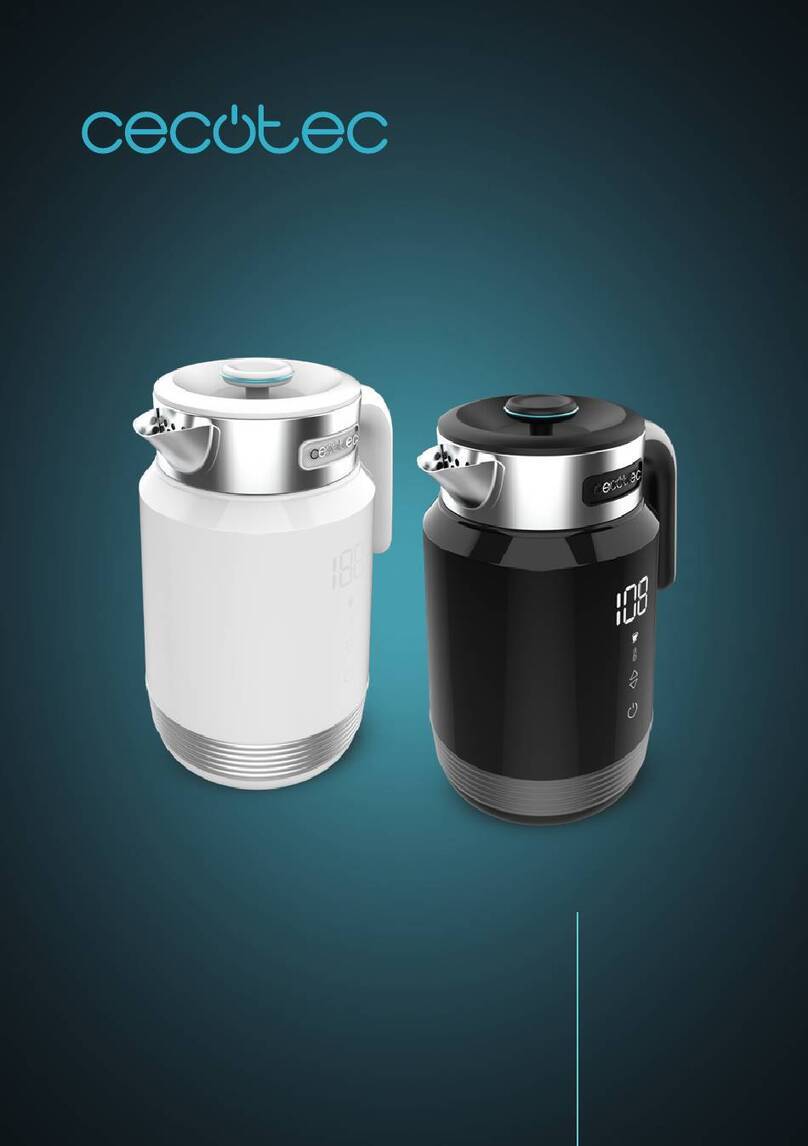9
just boiled, wait a minute or so before re-boiling the kettle. Do not attempt to hold the ON/OFF switch in the “on” posi-
tion or adjust the switch mechanism.
2) Safety cut-out
If the kettle is switched ON with too little or no water, it is protected against damage by a safety cut-out device which
will switch off the power.
If this cut-out operates, disconnect the kettle from the mains supply and leave to cool down before refilling with cold
water (otherwise the element could be damaged). It will reset automatically when cooled down.
3) If the kettle is lifted from base while operating (ON), it will automatically switch off.
Cleaning and maintenance
Cleaning the kettle
• Allow the kettle to cool down fully and disconnect the appliance from the mains before cleaning.
• Do not immerse the kettle or base in water.
• Use a soft dampened cloth to wipe the outside of the kettle and dry with a soft, dry cloth.
• DO NOT use harsh scouring agents.
• Ensure that all electrical connectors and sockets are kept dry.
Scale
Scale is mainly calcium carbonate (chalk), a harmless, naturally occurring mineral found in most water supplies. “Hard”
water contains more of this mineral than “soft” water.
When the water is heated, the minerals in the water solidify, making the water appear cloudy. These minerals form a thin
film on the walls, element and on the surface of the water. The water may look like it has white coloured pieces of plastic
floating on the surface. On traditional kettle elements, scale forms a hard white “crust” which adversely affects performance
and reduces the life of the element. As soon as you notice a film forming on the water, or on the interior walls of the kettle,
simply rinse the kettle and wipe it out.
Scale filter
Your kettle is fitted with a scale filter to prevent loose particles of scale being poured into your beverage. This filter is both
removable and washable. The frequency with which you will need to clean any scale deposits from your filter will depend on
the hardness of water in your area and how often you use the kettle.
You should remove and clean the water filter when you notice any deposits being left on the filter or if the pouring efficiency
is impaired.
Removing the scale filter
• Allow the kettle to cool down fully.
• Disconnect the appliance from the mains electrical supply.
• Make sure that your hands are clean and free from soap, etc or anything which might taint the water.
• Empty the kettle and remove the lid. Remove the filter by pushing the catch firmly from inside the kettle, then lift up
(fig. 1).
• Rinse under a tap while brushing with a soft brush (fig. 2).
• Replace the filter sliding it firmly down (fig. 3).
Descaling
It is vital to clean and descale the kettle and filter regularly in order to maintain it in good working order. Failure to descale
your kettle may invalidate your guarantee.
• It is recommended to use specific (store bought) products for descaling of kettles.
• When limescale starts to build up on the heating element, buy a suitable descaler and descale your kettle. After descal-
ing, boil with fresh water several times and discard. Clean any descaler off the kettle – it can damage the parts.
• If the filter requires descaling, remove the filter and place into the kettle whilst descaling.
• Ensure that the electrical connections are completely dry before using the kettle.
